Hard cider is the fastest growing beverage in the United States, which has led to a rapid growth in the number of cideries. The Pacific Northwest had 40 at last count.
Many cider makers don’t grow their own fruit—and while that sounds like a good opportunity for prospective apple growers, speakers at a recent cider workshop shared some sobering thoughts.
Marcus Robert, cider maker and operations manager at Tieton Cider Works near Yakima, Washington, said people thinking of getting into cider apple production should be realistic about the yields and prices they will get and be aware that they will have to invest perhaps $25,000 to $30,000 per acre before they see any return.
“You never want to plant a single tree unless you know you’re going to make some money,” he warned.
Tieton Cider Works does grow its own apples, and Robert said there’s no documentation or scientific knowledge about how a particular variety on a certain rootstock will perform in a commercial-scale planting or what kind of canopy management is best.
The company tried about 40 different cider varieties in a five-acre test block before planting another 50 acres for commercial production based on the quality of the cider produced by each variety and the yields per acre. The first plantings were spaced 5 feet apart with 12 feet between rows and trained on a trellis, but recent plantings have trees on Budagovsky 9 rootstocks planted 18 inches apart and trained to a super spindle system.
Small fruit
Many of the world’s 7,000 apple varieties can be used to make cider, Robert said, but dessert apples, such as Golden Delicious or Honeycrisp, are not among them.
Robert, who also owns a winery, said just as winemakers would not use table grapes, cider makers prefer apple varieties with more complex characteristics.
“You’ll never find a mind-blowing Thompson Seedless reserve out there,” he joked. “It may make good jam, but it will never make good wine.”
Tieton Orchards grows traditional bittersharp and bittersweet cider varieties, which have high tannin levels and contribute desirable flavors and mouth feel to the cider, as well as a few American heirloom varieties.
Many cider apples are small, which is a desirable in the sense that small fruit has a high concentration of sugars, phenolics, and tannins. “We don’t want to see huge water bombs,” Robert said.
The current price for cider apples is between $800 and $1,000 per ton (about $340 to $425 per bin), but Robert said growers should keep in mind that yields will be considerably lower than for dessert varieties.
Besides being small, some varieties have an extreme alternate bearing tendency. Wickson Crab, a variety he uses, is a typical crab apple with fruit roped on the branches.
“You’ll never get tonnage per acre because they’re an inch and a half to two inches in diameter,” he said, warning that a grower should expect to harvest five to six heavy bins per acre—and certainly no more than ten.
Some cider varieties, such as Dabinett and Medaille d’Or, are golf-ball sized. Kingston Black, Yarlington Mill, Porter’s Perfection, and Harry Masters Jersey are medium sized and yield somewhat better.
A good yield for a cider variety would be 40 bins per acre, Robert said. “If we ever got 70 bins per acre with any of these varieties, that would be amazing.”
High packouts
On the other hand, packouts will be very high, particularly compared with a difficult-to-grow variety like Honeycrisp. Cider apple growers don’t need to worry about bruises, scrapes, or limb rubs. External appearance doesn’t matter. It’s all about the internal quality.
Robert expects the cider apple market will stabilize at about $700 per ton. Washington’s large apple producers are not going to be interested in fooling around with cider apples, he said. “It’s probably going to be a niche market for small growers.”
But for new growers planning to plant ten acres or a few hundred trees, there’s another problem. They’ll need to spend $30,000 on a tractor just for a small acreage, even though it’s capable of covering 40 to 60 acres.
“If you put in ten acres and that’s all you’re farming and have $150,000 of equipment, you’re getting a sixth of the potential efficiency out of the equipment that you should be getting,” Robert said, who recommends borrowing equipment if possible.
Even on a small scale, establishing a cider orchard is a big commitment.
“Four to five acres may seem like a good side job, but basically, it’s going to be a full-time hobby,” Robert warned. “You’re going to be out there, every single day, all year long. Maybe you’ll get two weeks of vacation at the end of harvest but don’t count on much more than that. Trees are very labor-intensive things to grow.”
He advised those with no previous experience of growing fruit to find a consultant or a friend who’s been growing trees for a long time to guide them.
“If you lose just one production year because of one tiny mistake, you can be throwing $3,000 to $4,000 per acre out the window on that lost production,” he said.
Growers should count on spending $25,000 to $30,000 per acre before seeing a return with any variety, Robert said. For a 20-acre orchard, expect to spend $600,000 by the time you get into production and are able to start paying off the operating loan and a large mortgage.
Robert said he grew up on a 60-acre orchard where his family could have a $100,000 operating loan to pay off by the end of the year. “If we didn’t get a check back from the packer, we potentially lost that piece of ground I grew up on,” he said.
It will take two years to obtain cider apple trees (see “Expect a wait for apple trees”) and at least another four years for the trees to come into production (or more if the trees are grown on older-style planting systems), Robert said.
“Educate yourself on what you’re doing, where you’re planting trees, and how you’re planting them.
“I don’t want to be up here squashing people’s dreams, but you have to really look at reality because this is a business,” he added. “Try not to be too idealistic or esoteric. You’re getting into a business that’s difficult and convoluted—not only in the growing portion but the business management portion.” •
—–
Editor’s note: A photo of cider apples that was published with this story incorrectly named the variety Harry Master’s Jersey when it was not. That photo caption was corrected as Porter’s Perfection on October 6, 2014.

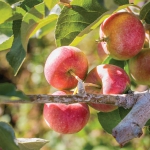
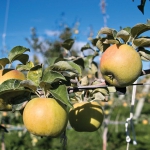
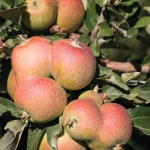
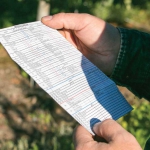
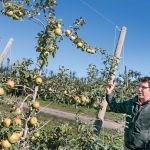





Sounds like he just doesn’t want competition. Ignore him. Order scions and rootstock and start grafting.
[…] trees down, then farmers uprooted them to make way for dessert apples and other fruits. It can take years if not decades for newly planted cider apple trees to become viable, making many modern farmers loath to […]